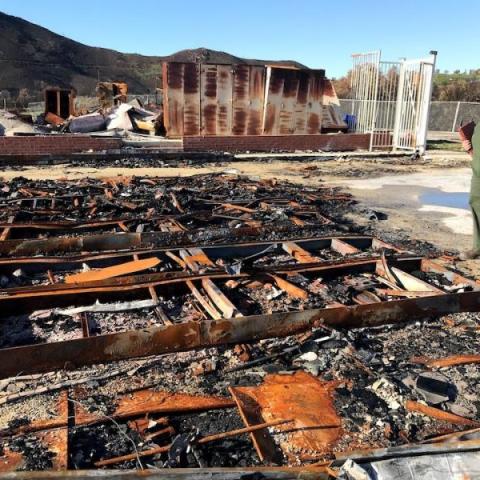
P-41, a much-studied mountain lion in and around Santa Monica Mountains NRA, died from a collection of poisons/NPS
One of the most studied mountain lions that roamed through Santa Monica Mountains National Recreation Area in California died from exposure to multiple compounds of anticoagulant rodenticide, a form of rat poison, according to lab work.
The remains of the adult male, P-41, tracked as part of a National Park Service study, were found in early October, a few weeks after the La Tuna Fire burned a portion of his home range in the Verdugo Mountains.
Because of the location of the fire and the animal’s thin condition, researchers wondered whether the fire was a contributing factor in his death. A necropsy conducted by the California Department of Fish and Wildlife found that the remains were too decomposed to pinpoint a cause of death. Lab work performed by the California Animal Health and Food Safety Laboratory, however, found six different anticoagulant rodenticide compounds in the animal’s liver.
“The lab found both first and second-generation anticoagulants in his liver,” said Dr. Seth Riley, wildlife ecologist for Santa Monica Mountains National Recreation Area. “We continue to see indications that these poisons are working their way up the food chain through what we believe is unintentional poisoning.”
The compounds found in P-41’s system were brodifacoum, bromadiolone, chlorophacinone, difethialone, diphacinone, and difenacoum.
“Exposure to anticoagulant rodenticides is common among the mountain lions we necropsy, from all over the state” said Deana Clifford, senior wildlife veterinarian for the California Department of Fish and Wildlife. “Sadly, we were not able to determine the cause of death and to tell the full story of this animal, but we do know he was thin at the time of his death.”
Although it’s not known exactly how P-41 ingested the poisons, researchers believe mountain lions are exposed through secondary or tertiary poisoning, meaning that they consume an animal that ate the bait, such as a ground squirrel, or an animal that ate an animal that consumed the bait, such as a coyote. See infographic on how rodenticide can work its way up the food chain.
National Park Service researchers have documented the presence of the anticoagulant rodenticide compounds in 14 out of 15 local mountain lions that they have tested, including in a three-month-old kitten.
Suggestions on controlling rodents without anticoagulant rodenticides are available here. Expert advice is also available by contacting [email protected].
National Park Service biologists began tracking P-41 in May of 2015 and found that, with the exception of the Griffith Park mountain lion known as P-22, he had the smallest home range of any adult male mountain lion in the study.
The GPS function on P-41’s collar failed earlier this summer, so biologists were unable to track how, if at all, the La Tuna Fire affected his movements. He was approximately 10 years old at the time of his death.
Since 2002, the National Park Service has been studying mountain lions in and around the Santa Monica Mountains to determine how they survive in an increasingly fragmented and urbanized environment.
The California Department of Fish and Wildlife is responsible for overseeing the management and conservation of mountain lions in the state.


 Support Essential Coverage of Essential Places
Support Essential Coverage of Essential Places







Add comment